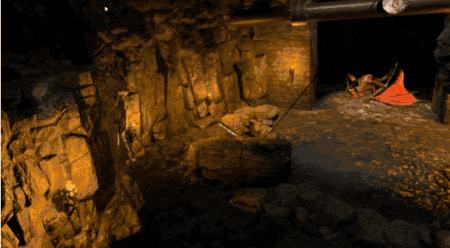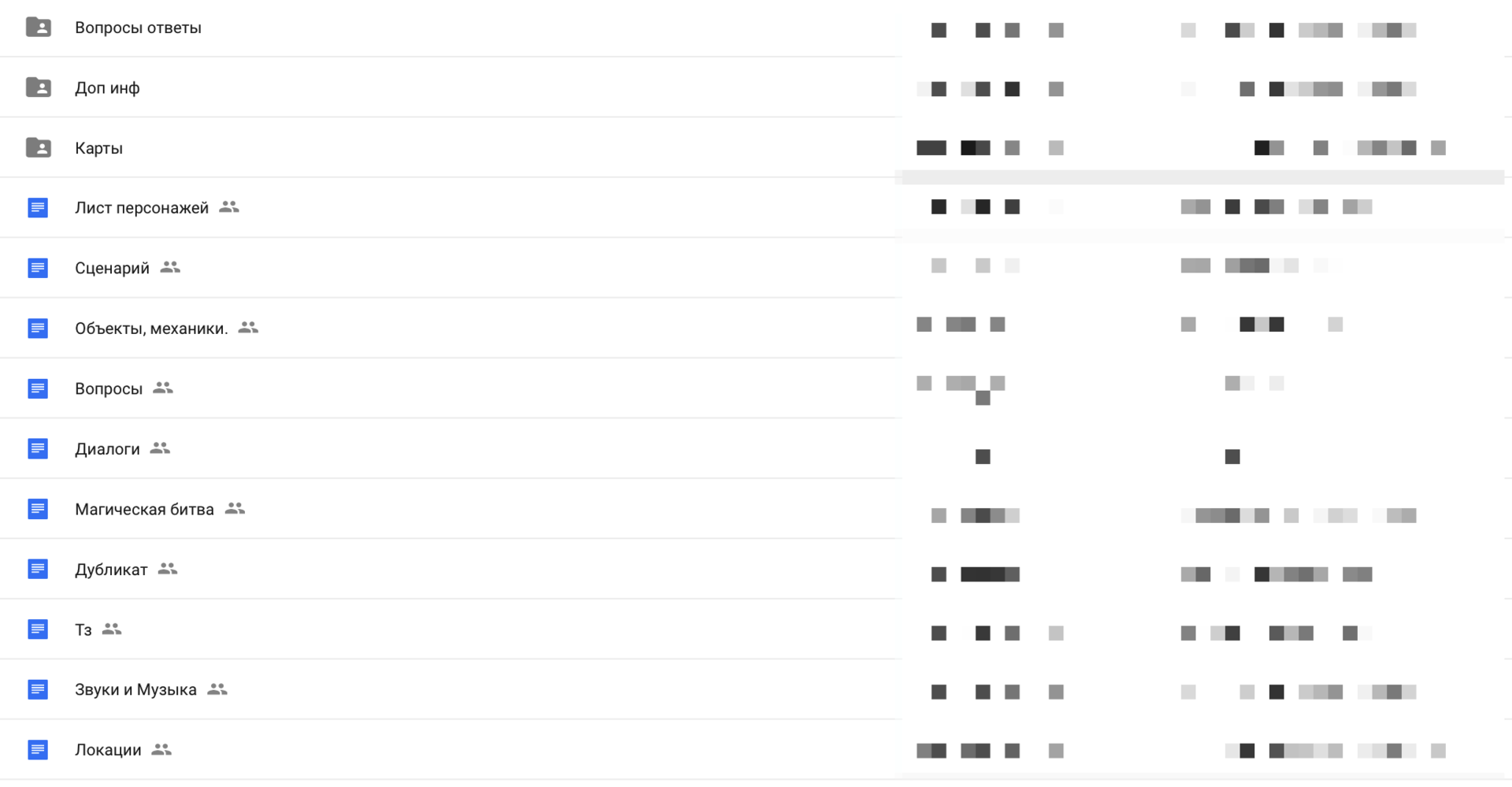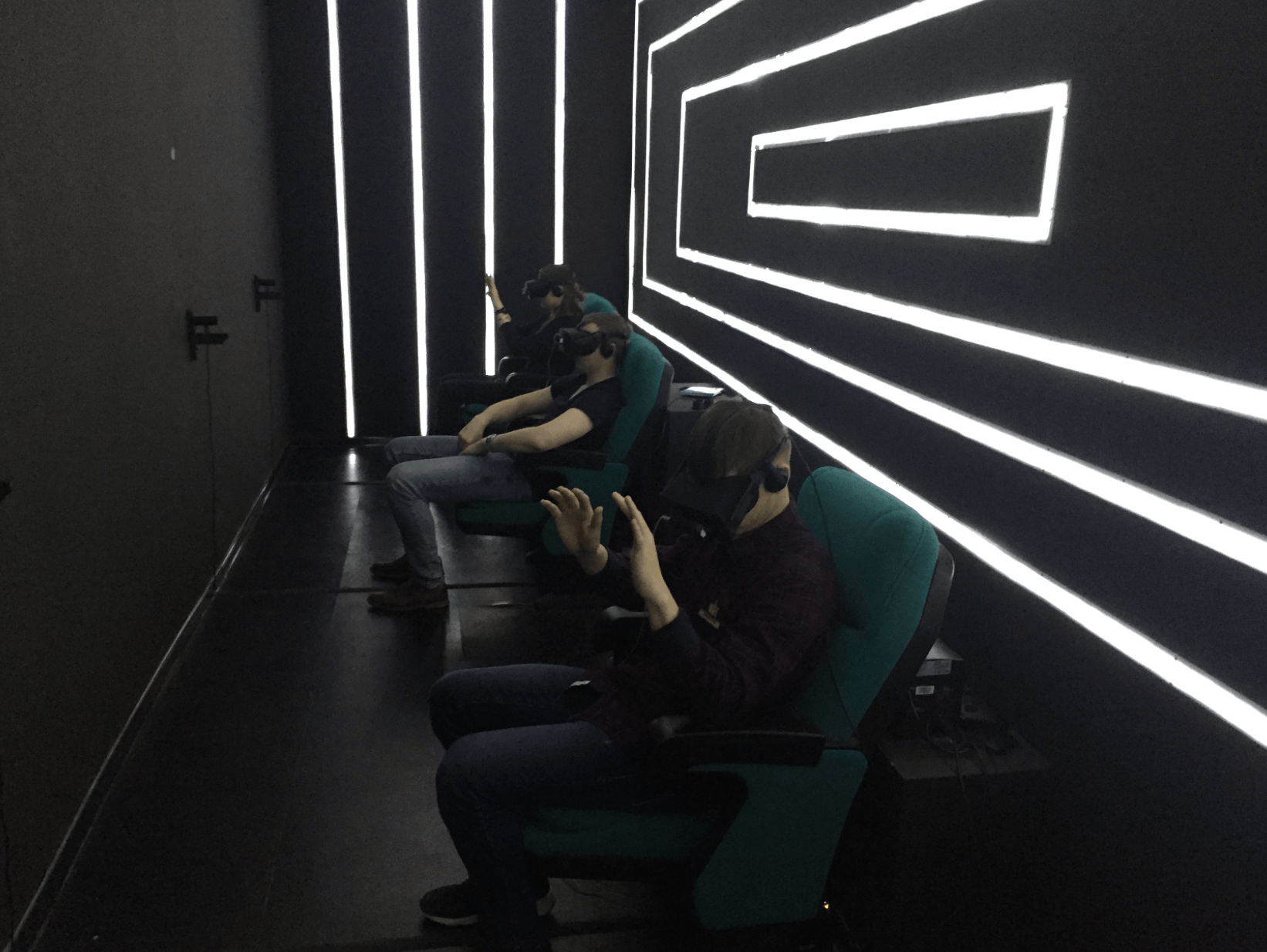Virtual Quest Rakes, Part One: Game Design, Developers, Slam Choice
In March 2016, I read the book “The Green King” of Sulitser and burst through me: the brain began frantically inventing new directions for Quest House, which would have made the company stronger. So the idea of virtual quests was born. Ilya, my partner and director of “VR Quest House”, undertook to launch a new direction.
We planned to open in 3-4 months, invest about a million rubles, but something went wrong again. Virtual quest rake under the cut.
There is also something wrong with the quest trailer.
After we decided to open a virtual quest, we faced the following questions:
')
In March 2016, in Russia there was only one active virtual quest. Of course, we immediately went to Tomsk to play it and see everything with our own eyes. It was important for us to understand at what stage of development VR quests are now, and what we can do better.
In general, I liked the game, but there were mixed impressions. It was very much felt that the quest is still raw and uses a small part of the VR capabilities. Immediately there was a list of potential improvements. This is what we noticed:
Our main task was to create our virtual quest in a short time, making it better than our competitors. We knew for sure that other quest companies had already begun to look towards virtual reality, so it was impossible to pull.
It remains to decide: to cut the quest on their own or to outsource?
+ terms and process under control (or at least there is an illusion),
+ pumping programmers, they will be able to work faster on the next project,
+ bugs will rule faster
+ more flexibility in implementing new ideas.
- long to assemble a team,
- very expensive
- need constant work load,
- incomprehensible terms and cost,
- prohibitively high risk of the file on the first draft.
+ quick start of work,
+ understandable terms (haha) and fixed cost (hehe),
+ already have experience, competence and expertise,
+ liability for the result.
- less control
- the risk of inconsistency of the declared competencies (in the words are all Lions Thick),
- when changing the contractor, the next project will be done from scratch.
The choice between creating your own team and hiring third-party developers turned out to be difficult, but predictable. We chose an outsource to save time, money and not risk it.
In the process of searching for contractors, foreign studios rejected right away - it turned out the exorbitant cost of taking into account hourly pay for work. An additional risk was the potential language difficulties. We sent a request to develop a virtual quest in 10 Russian studios and received only 3 adequate responses.
Most teams said they were not developing for VR. At all. No Totally. Some honestly admitted that they are ready to take on the project, but they have no experience and they cannot guarantee that the quest will be released.
As a result, they chose the guys who showed particular interest and showed a similar implemented project. They offered to write on Unity, and we did not refuse. Initially considered two options - Unity and Unreal Engine.

Unity-dragon out of Unity-cave
In a sense, I was lucky - I had a friend who, firstly, an avid gamer, and secondly - a screenwriter. In his free time, he is engaged in the creation of games, and in the past we have even done several small projects together: Forever Steve , School of Rock and Terra God . Of course, this is not the same as making a virtual quest, but in some places it is quite similar.
At the start it was necessary to determine the theme of the quest. We wanted to reach the largest possible audience, so we decided to take something that would be popular.
Selected from:
Ilya and I had an idea about what the quest could look like on any of these topics. Therefore, we interviewed 100 of our friends, asking them which quest they would be interested in to kill. Magic won with a score of 54% of the vote;)
After that, they started creating a script, and after about three weeks it was ready. The script includes:

Ready script - a set of files on Google-disk. The total number of comments is about 1,000.
We faced a number of difficulties due to the fact that we started writing the script before we chose the development team. Many of the gaming chips and mechanics did not see the light after the heated debate between the scriptwriter and the developers. Some things had to be redone due to technical limitations in the game engine. From some features refused because of the huge time-consuming implementation.
A few examples:
I had to give up part of the game gestures. Instead of throwing stones, the players roll them. Simplified the mechanics of flying on a broomstick (the same magic). The original idea was too complicated. In the beta version of the game changed the task where you want to climb the stairs. There was a bug with the movements - the players moved forward too fast and did not have time to turn their heads. As a result, instead of passing a mini-task, the quest participants were unanimously dropped off a cliff. Sometimes in turns, sometimes at the same time.

That same staircase from which everyone flew away
What can I say, the original script was four (!) Times more than what was left. I had to go for it to keep the format. Now the game consists of two parts and passes for 1: 20—1: 30.
Before the start of the development, Ilya and I determined for ourselves the deadline by which the virtual quest should start - September 1, 2016. We chose this date for a reason.
First, the quest needed to be launched quickly in order to have time to become second in Russia. Secondly, in Novosibirsk "Quest House" on Lenin 15, the location "Breaking Bad" was closed and it was possible to use its area to place a virtual quest there. Thirdly, we understood that the first version of the game would most likely be crude, we wanted to have time to test and fix everything before the New Year. In the quests for the New Year holidays there is a lot of armor, so it would be very beneficial to find this period with a fully working and tested game.
When we shared our thoughts with the game developers, they agreed with us and confirmed that it was more than realistic to develop a game in 3 months. We explained that the launch delay threatens us with financial losses:
After that, a clause on fines appeared in the contract - if the game is not ready by September 1, the development cost is reduced by 1% of the contract amount for every 2 working days overdue, but not more than 40%. The sum of the contract amounted to XXX XXX rubles.

Picture from Techradar.com
At the time of the start of development, there were two main versions of helmets - from HTC and Oculus. With almost identical characteristics, Oculus won by price ($ 200 cheaper) and weight. Now Sony’s helmet would be added to the selection, but it only works with the PS4, so our choice would remain the same.
A big plus of HTC was the motion controllers and the ability to move in 4 × 4 meter space. Given that we planned to launch a quest for 2-4 people, a total area of about 60m² would be required. This did not fit into the business format - after a successful launch in Novosibirsk, we planned to develop according to the franchise model. For partners it would be difficult to recoup such areas, plus small premises in shopping centers were immediately cut off. Looking ahead - we placed our quest for 15m².

Futuristic virtual quest room
In the next part I will talk in detail about the difficulties we encountered during the construction and development process, and what came of it.
We planned to open in 3-4 months, invest about a million rubles, but something went wrong again. Virtual quest rake under the cut.
There is also something wrong with the quest trailer.
Launch of the project
After we decided to open a virtual quest, we faced the following questions:
')
- What will the quest? What will the script look like?
- How to approach the development - to assemble your team or give it to outsourcing?
- Which virtual reality helmet to use?
In March 2016, in Russia there was only one active virtual quest. Of course, we immediately went to Tomsk to play it and see everything with our own eyes. It was important for us to understand at what stage of development VR quests are now, and what we can do better.
In general, I liked the game, but there were mixed impressions. It was very much felt that the quest is still raw and uses a small part of the VR capabilities. Immediately there was a list of potential improvements. This is what we noticed:
- there is little interaction with the outside world, which makes the game seem monotonous,
- the quest seemed short - we passed it in 30 minutes, we wanted more.
Own development VS outsourcing
Our main task was to create our virtual quest in a short time, making it better than our competitors. We knew for sure that other quest companies had already begun to look towards virtual reality, so it was impossible to pull.
It remains to decide: to cut the quest on their own or to outsource?
On their own
+ terms and process under control (or at least there is an illusion),
+ pumping programmers, they will be able to work faster on the next project,
+ bugs will rule faster
+ more flexibility in implementing new ideas.
- long to assemble a team,
- very expensive
- need constant work load,
- incomprehensible terms and cost,
- prohibitively high risk of the file on the first draft.
Outsourcing
+ quick start of work,
+ understandable terms (haha) and fixed cost (hehe),
+ already have experience, competence and expertise,
+ liability for the result.
- less control
- the risk of inconsistency of the declared competencies (in the words are all Lions Thick),
- when changing the contractor, the next project will be done from scratch.
Our choice
The choice between creating your own team and hiring third-party developers turned out to be difficult, but predictable. We chose an outsource to save time, money and not risk it.
In the process of searching for contractors, foreign studios rejected right away - it turned out the exorbitant cost of taking into account hourly pay for work. An additional risk was the potential language difficulties. We sent a request to develop a virtual quest in 10 Russian studios and received only 3 adequate responses.
Most teams said they were not developing for VR. At all. No Totally. Some honestly admitted that they are ready to take on the project, but they have no experience and they cannot guarantee that the quest will be released.
As a result, they chose the guys who showed particular interest and showed a similar implemented project. They offered to write on Unity, and we did not refuse. Initially considered two options - Unity and Unreal Engine.

Unity-dragon out of Unity-cave
Game Design Quest
In a sense, I was lucky - I had a friend who, firstly, an avid gamer, and secondly - a screenwriter. In his free time, he is engaged in the creation of games, and in the past we have even done several small projects together: Forever Steve , School of Rock and Terra God . Of course, this is not the same as making a virtual quest, but in some places it is quite similar.
At the start it was necessary to determine the theme of the quest. We wanted to reach the largest possible audience, so we decided to take something that would be popular.
Selected from:
- space,
- magic,
- dinosaurs,
- pirates.
Ilya and I had an idea about what the quest could look like on any of these topics. Therefore, we interviewed 100 of our friends, asking them which quest they would be interested in to kill. Magic won with a score of 54% of the vote;)
After that, they started creating a script, and after about three weeks it was ready. The script includes:
- The sequence of game events.
- Characters
- Objects with which players interact.
- Questions
- Dialogues.
- Design locations.
- Music and sounds.
- TZ for programmers.

Ready script - a set of files on Google-disk. The total number of comments is about 1,000.
The problem - who came up with and who to do
We faced a number of difficulties due to the fact that we started writing the script before we chose the development team. Many of the gaming chips and mechanics did not see the light after the heated debate between the scriptwriter and the developers. Some things had to be redone due to technical limitations in the game engine. From some features refused because of the huge time-consuming implementation.
A few examples:
I had to give up part of the game gestures. Instead of throwing stones, the players roll them. Simplified the mechanics of flying on a broomstick (the same magic). The original idea was too complicated. In the beta version of the game changed the task where you want to climb the stairs. There was a bug with the movements - the players moved forward too fast and did not have time to turn their heads. As a result, instead of passing a mini-task, the quest participants were unanimously dropped off a cliff. Sometimes in turns, sometimes at the same time.

That same staircase from which everyone flew away
What can I say, the original script was four (!) Times more than what was left. I had to go for it to keep the format. Now the game consists of two parts and passes for 1: 20—1: 30.
Working conditions with developers
Before the start of the development, Ilya and I determined for ourselves the deadline by which the virtual quest should start - September 1, 2016. We chose this date for a reason.
First, the quest needed to be launched quickly in order to have time to become second in Russia. Secondly, in Novosibirsk "Quest House" on Lenin 15, the location "Breaking Bad" was closed and it was possible to use its area to place a virtual quest there. Thirdly, we understood that the first version of the game would most likely be crude, we wanted to have time to test and fix everything before the New Year. In the quests for the New Year holidays there is a lot of armor, so it would be very beneficial to find this period with a fully working and tested game.
When we shared our thoughts with the game developers, they agreed with us and confirmed that it was more than realistic to develop a game in 3 months. We explained that the launch delay threatens us with financial losses:
- we would continue to pay for the simple premises of the "Breaking Bad" quest,
- we would not receive the proceeds from the games in the VR quest.
After that, a clause on fines appeared in the contract - if the game is not ready by September 1, the development cost is reduced by 1% of the contract amount for every 2 working days overdue, but not more than 40%. The sum of the contract amounted to XXX XXX rubles.
Which helmet to choose: HTC Vive or Oculus Rift?

Picture from Techradar.com
At the time of the start of development, there were two main versions of helmets - from HTC and Oculus. With almost identical characteristics, Oculus won by price ($ 200 cheaper) and weight. Now Sony’s helmet would be added to the selection, but it only works with the PS4, so our choice would remain the same.
A big plus of HTC was the motion controllers and the ability to move in 4 × 4 meter space. Given that we planned to launch a quest for 2-4 people, a total area of about 60m² would be required. This did not fit into the business format - after a successful launch in Novosibirsk, we planned to develop according to the franchise model. For partners it would be difficult to recoup such areas, plus small premises in shopping centers were immediately cut off. Looking ahead - we placed our quest for 15m².

Futuristic virtual quest room
In the next part I will talk in detail about the difficulties we encountered during the construction and development process, and what came of it.
Source: https://habr.com/ru/post/321772/
All Articles